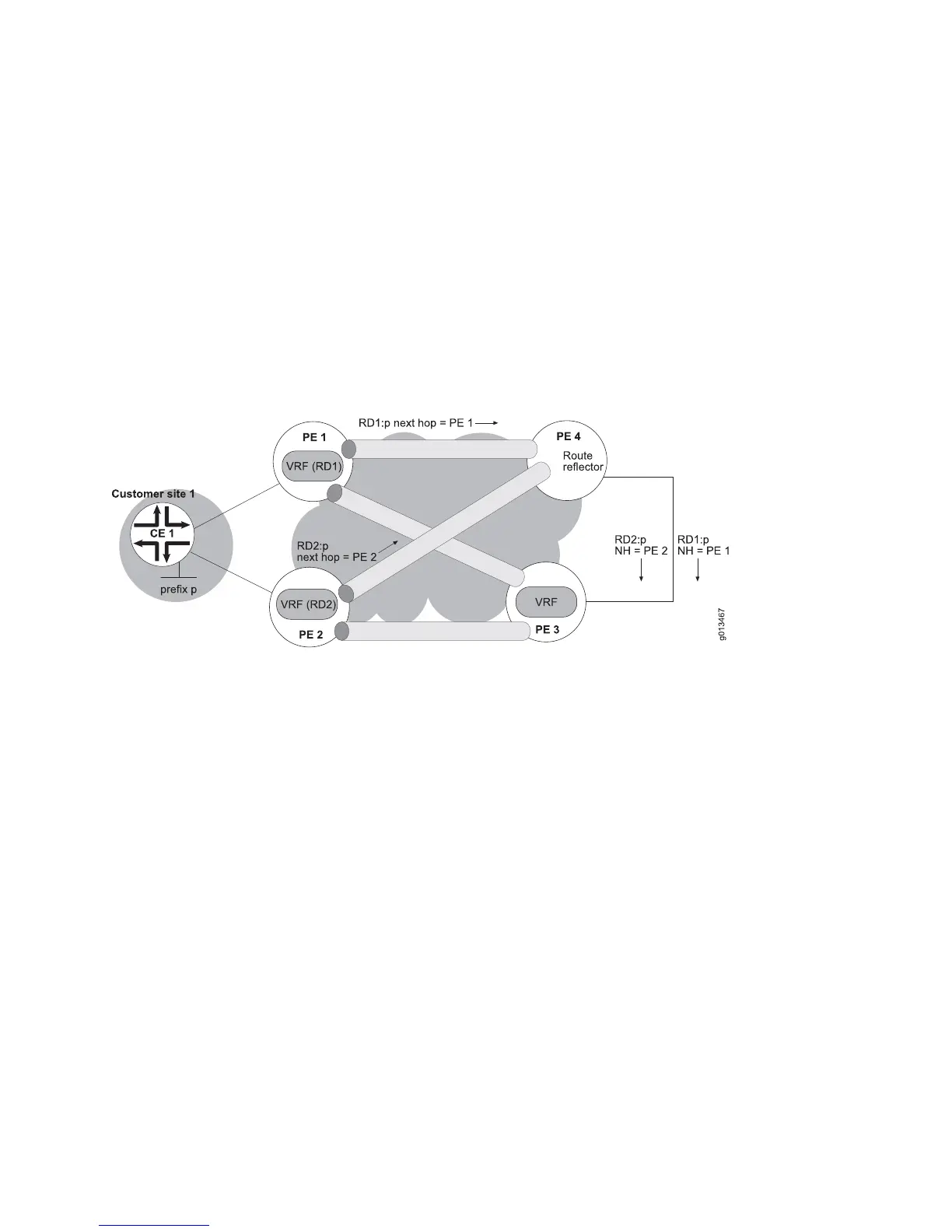Fast Reconvergence with Unique RDs
You can assign a unique RD for the VRFs in each PE router to avoid the slow
reconvergence issue. The route reflectors in the network consider advertised routes
with different RDs to be different prefixes and therefore reflect both routes.
In Figure 99 on page 456, route reflector PE 4 reflects to PE 3 routes to the CE router
through both PE 1 and PE 2. Suppose that the route through PE 1 is better than the
route through PE 2. If you have assigned different RDs to the VRFs, then PE 4 reflects
both routes to its client, PE 3.
Figure 99: Topology for Fast Reconvergence by Means of Unique VRF RDs, Before Tunnels Go Down
If PE 1 goes down, the MPLS tunnels to it (PE 4–PE 1 and PE 3–PE 1) are dropped
immediately. However, because the route reflector does not take into account the
reachability of the next hop, it still reflects both the PE 1 route and the PE 2 route.
When PE 3 imports these routes into its VRF, it resolves the routes and discovers
that the tunnel to PE 1 is down. PE 3 declares the next hop for the route through
PE 1 to be unreachable. It then selects the PE 2 route as the best route and installs
it in the VRF’s IP routing table.
On the other hand, if the VRFs in PE 1 and PE 2 share the same RD, the route reflector
reflects only the best route, in this example the route through PE 1. If PE 1 goes
down in this situation, PE 4 still reflects the route through PE 1. When PE 3 resolves
the route, it finds that the tunnel is down and declares the next hop to be unreachable.
Traffic then suffers a delay due to slow reconvergence.
Assigning a unique RD for each VRF can be useful for other reasons as well:
■ PE-to-PE forwarding requires an MPLS tunnel from the ingress PE router to the
egress PE router. In some topologies, such as networks with a sparse RSVP-TE
mesh where the route reflector is not in the forwarding path, little correlation
exists between the presence of an MPLS tunnel or IP connectivity from the route
reflector to the egress PE router and the presence of the MPLS tunnel from the
ingress PE router to the egress PE router.
For these networks, relying on the ingress PE router is better than relying on the
route reflector to decide which route is best. For this to work properly, the ingress
456 ■ Configuring BGP VPN Services
JUNOSe 11.1.x BGP and MPLS Configuration Guide
